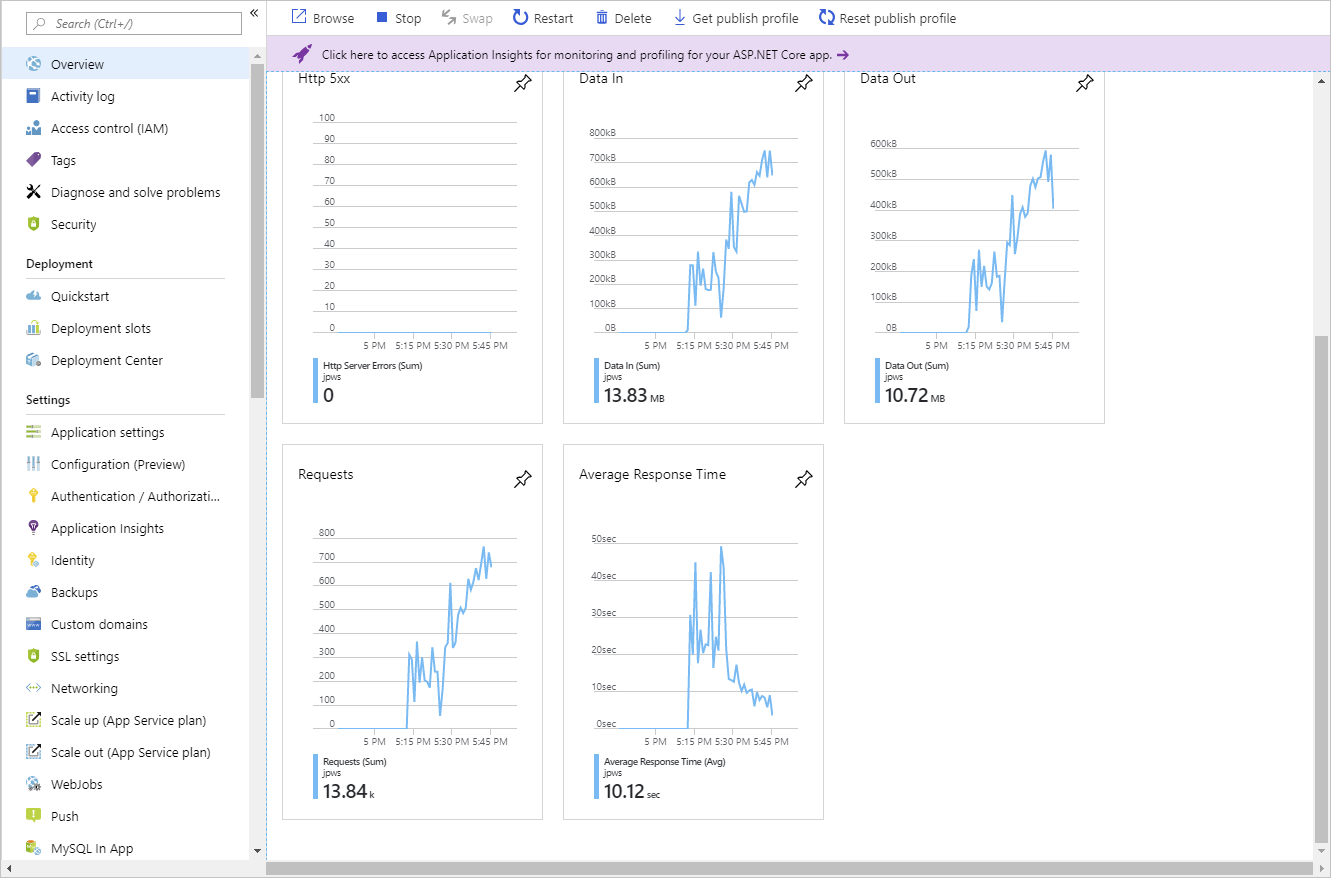Enable autoscale in App Service
In this unit, you learn how to enable autoscaling, create autoscale rules, and monitor autoscaling activity
Enable autoscale
Get started with autoscaling by navigating to your App Service plan in the Azure portal and select Scale out (App Service plan) in the Settings group in the left navigation pane. Select Rules Based in the Scale out method section of the page, and then select Configure.
Note
Not all pricing tiers support autoscaling. The development pricing tiers are either limited to a single instance (the F1 and D1 tiers), or they only provide manual scaling (the B1 tier). If you selected one of these tiers, you must first scale up to the S1 or any of the P level production tiers.
By default, an App Service Plan only implements manual scaling. Selecting Custom autoscale reveals condition groups you can use to manage your scale settings.
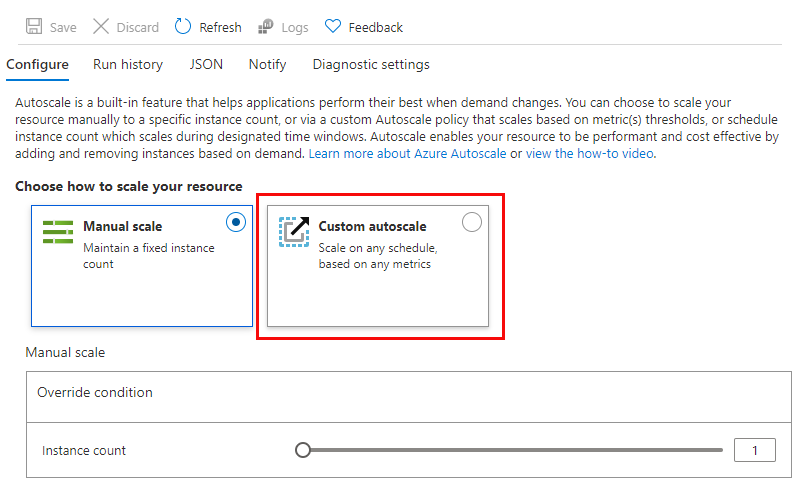
Add scale conditions
Once you enable autoscaling, you can edit the automatically created default scale condition, and you can add your own custom scale conditions. Remember that each scale condition can either scale based on a metric, or scale to a specific instance count.
The Default scale condition is executed when none of the other scale conditions are active.
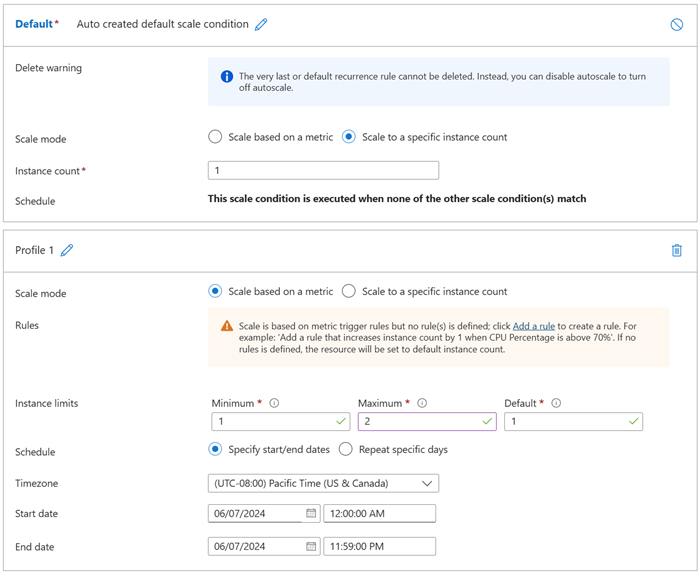
A metric-based scale condition can also specify the minimum and maximum number of instances to create. The maximum number can't exceed the limits defined by the pricing tier. Additionally, all scale conditions other than the default may include a schedule indicating when the condition should be applied.
Create scale rules
A metric-based scale condition contains one or more scale rules. You use the Add a rule link to add your own custom rules. You define:
- The criteria that indicate when a rule should trigger an autoscale action.
- The autoscale action to be performed.
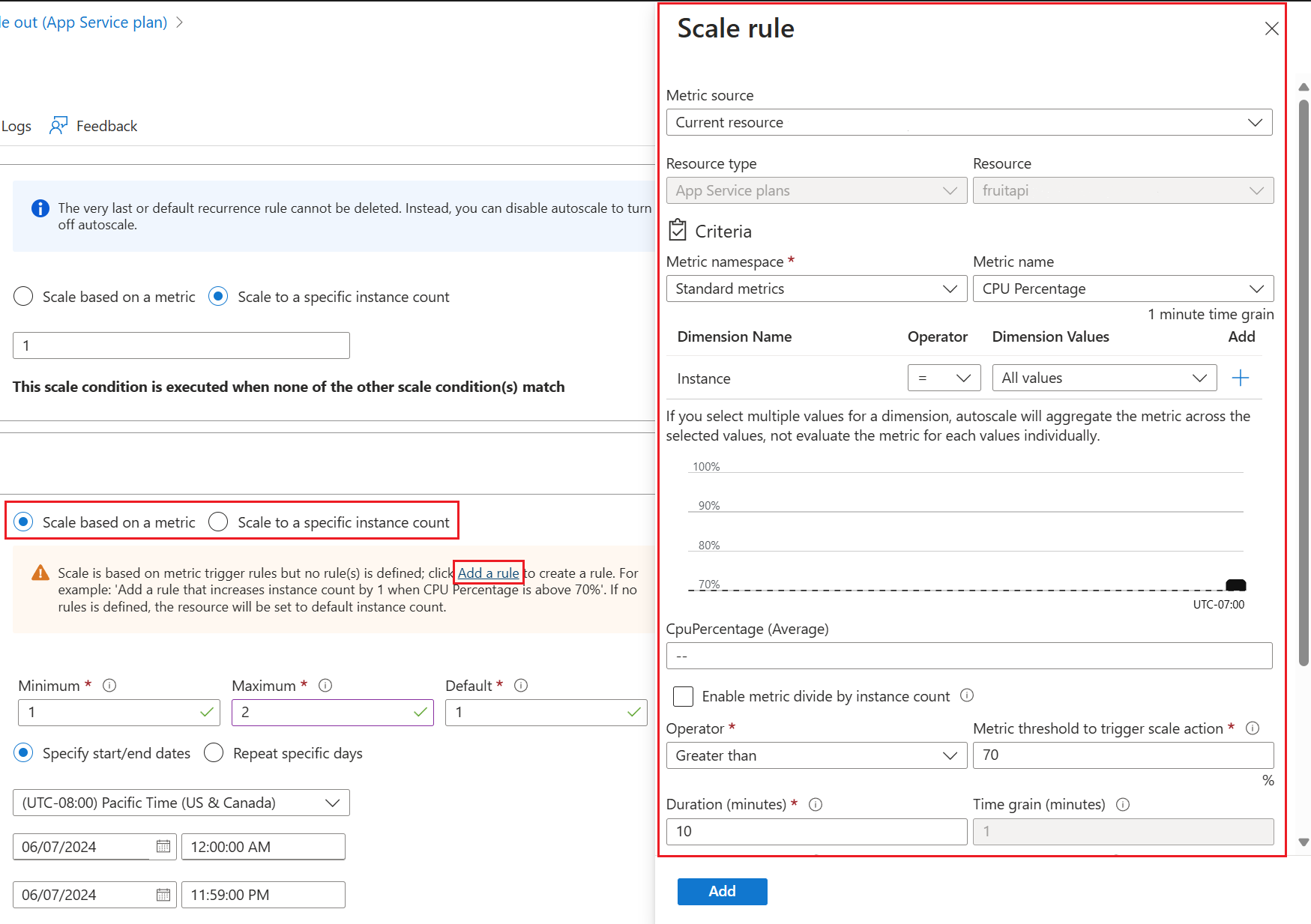
Monitor autoscaling activity
The Azure portal enables you to track when autoscaling occurred through the Run history chart. This chart shows how the number of instances varies over time, and which autoscale conditions caused each change.
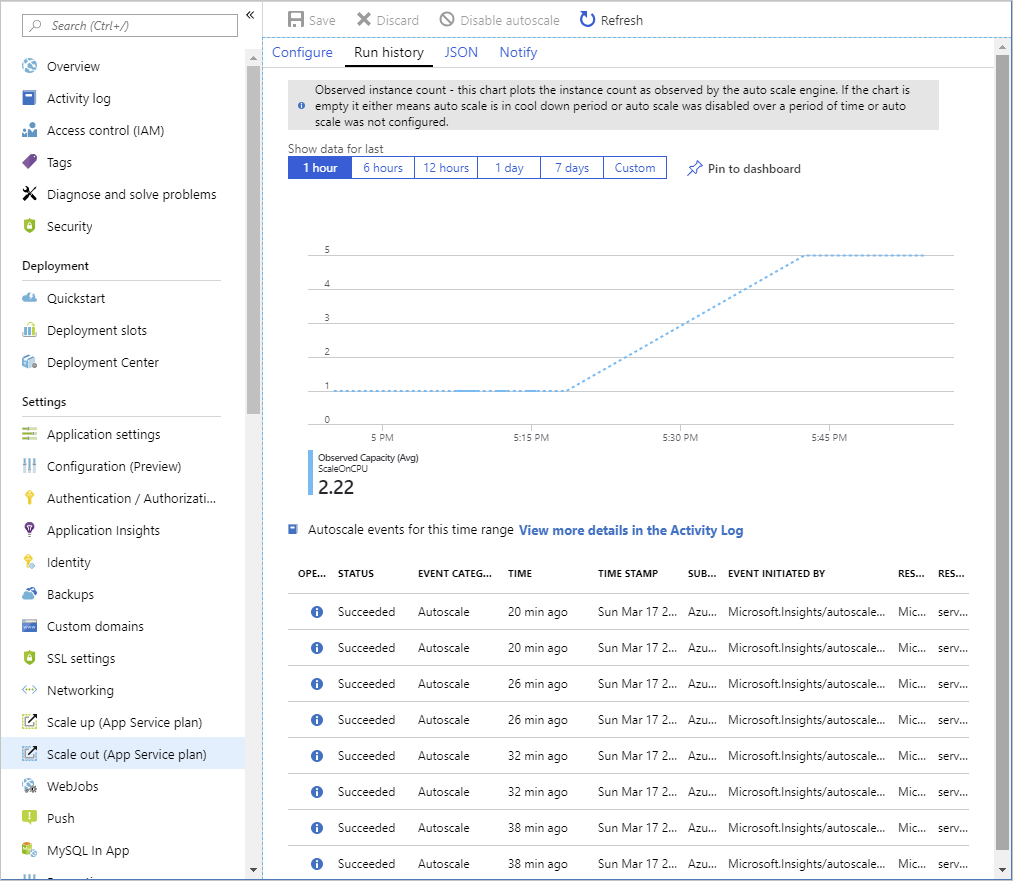
You can use the Run history chart with the metrics shown on the Overview page to correlate the autoscaling events with resource utilization.
